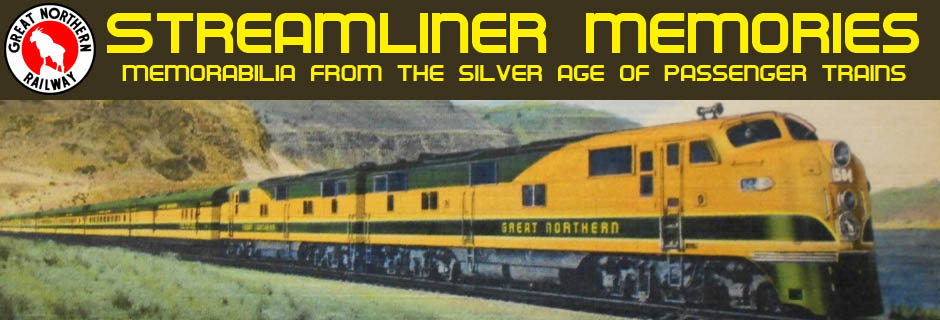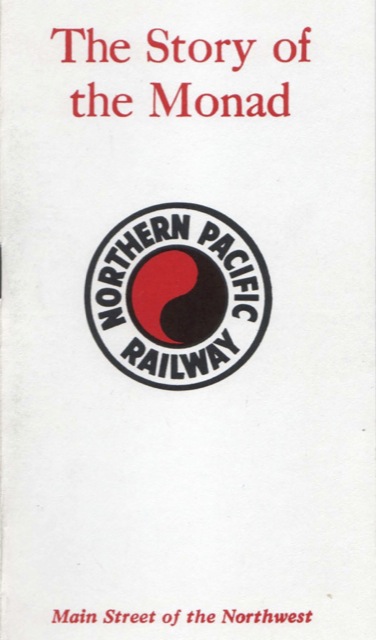Though nominally competitors, after 1900 the Great Northern and Northern Pacific had several major stockholders in common, notably the Great Northern’s founder, James J. Hill. As a result, the railroads had many things in common, including sharing a headquarters building in St. Paul, Minnesota and, eventually, similar logos: both circular and dominated by the color red, hinting at an Asian influence.
Click image to download a 2.0-MB PDF of this 12-page brochure.
While the Great Northern simple red circle eventually evolved into its famous goat, the Northern Pacific used the more subtle yin yang, emphasizing the railway’s part as a route to the Orient. This brochure, distributed by the railway in the 1960s, tells how the Northern Pacific came to adopt this logo.
Contrary to legend, Hill did not own either the Great Northern or the Northern Pacific. He did share control of the former with four partners, two of whom were also instrumental in building the Canadian Pacific. With his partners, Hill attempted to gain control of the NP after it went bankrupt in 1893 but was prohibited from doing so by a Minnesota anti-monopoly law. So the railroad was instead reorganized by J.P. Morgan, who put his own people in charge and they did not always listen to Hill’s advice. Eventually, Morgan allowed Hill and his partners to buy into the Northern Pacific.
Before he died in 1916, Hill built a large office building in downtown St. Paul that housed the headquarters of the Great Northern, Northern Pacific, and the First National Bank of St. Paul (which eventually became US Bank). The presidents’ offices of the two railroads shared a connecting door that supposedly was never unlocked until the railroads officially merged in 1970 (though I’ve been reliably informed that the door was often unlocked for various routine purposes).
At his death, Hill owned 50,000 shares of stock in the Great Northern; 10,000 shares in the NP; and 5,177 shares in the Chicago, Burlington & Quincy (the vast majority of whose shares were owned by the GN and NP). I’ll have to find the 1916 annual reports of these railroads to find out how many shares of stock were outstanding, but by that year Hill probably owned less than 10 percent of the Great Northern and no more than 1 percent of the NP. But his influence continues today in the Burlington Northern & Santa Fe, which named its operations center in Ft. Worth after him.

